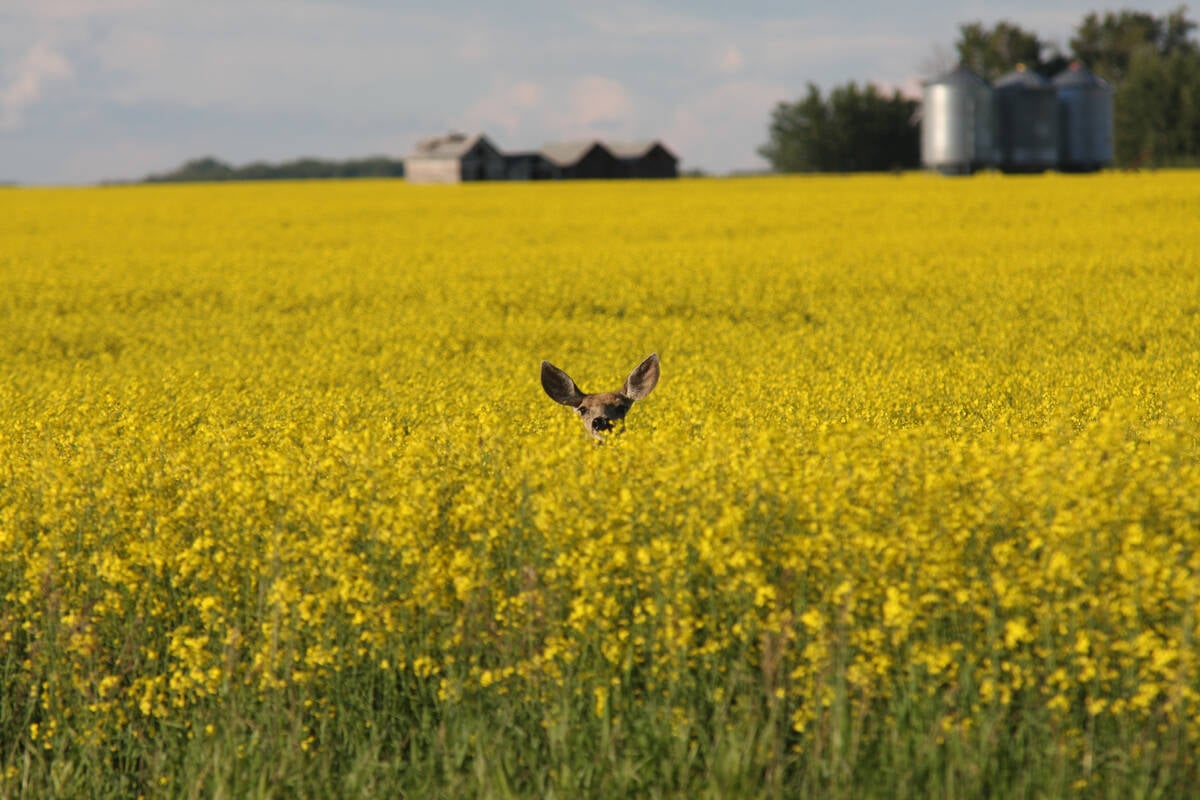Outraged by the apparent disparity in fertilizer prices between Canada and the United States, a Manitoba farm organization wants manufacturers to know that they are being watched.
“The issue is not over. As an organization we are going to keep asking questions until we get to the bottom of it,” said Keystone Agricultural Producers president David Rolfe during a session at Manitoba Ag Days in Brandon last week.
“You, as farmers, deserve to get an answer as to why you paid millions and millions more for fertilizer than you should have last spring.”
Read Also

Drones now used to assess wildlife crop damage in Saskatchewan
Wildlife damage in Saskatchewan crops is now assessed by drones and artificial intelligence.
At one point in his speech, the KAP president held up a document available for download from the Canadian Fertilizer Institute website. It listed the 22 federal Conservative MPs who have fertilizer manufacturing facilities in their ridings in Western Canada.
“You can draw your own conclusions about the lobbying effort that is going on,” said Rolfe, as a chorus of groans erupted in the meeting room.
Last spring, KAP commissioned PricewaterhouseCoopers to study fertilizer prices on both sides of the border. The investigation of five retail outlets in North Dakota and 12 in Manitoba found that prices on a basket of commonly used fertilizers averaged 33 percent higher in Canada.
The biggest shock, said Rolfe, was the price of anhydrous ammonia 82-0-0, which was on average 63 percent higher in Manitoba.
While their American cousins were paying $522 a tonne, Manitoba farmers were charged an average of $852 for the same amount.
“Some of the product that was moved out of Brandon sold $300 a tonne cheaper in the United States than it was here in Canada,” said Rolfe.
“Imagine the number of tonnes that were applied in the spring of ’07. Multiply that by $100 to $300 a tonne, and look at how many dollars went out of your pockets and into the fertilizer company’s pockets. Huge. Millions and millions of dollars.”
KAP’s request for a Competition Bureau investigation as to why fertilizer manufactured in Canada sells for lower prices south of the border was turned down.
Clyde Graham, vice-president of strategy and alliances for the Canadian Fertilizer Institute, said the Competition Bureau’s statement last year that there were no grounds for an investigation into the matter speaks for itself.
“Year after year, Agriculture Canada has determined that there are no significant differentials between Canadian and U.S. fertilizer prices,” he said. “The KAP report is not consistent with the work that Agriculture Canada has been doing on an annual basis.”
As for the document listing the 22 MPs with production facilities in their ridings, Graham said that it states an obvious fact that many fertilizer plants are in rural areas, which are for the most part held by Conservative MPs.














